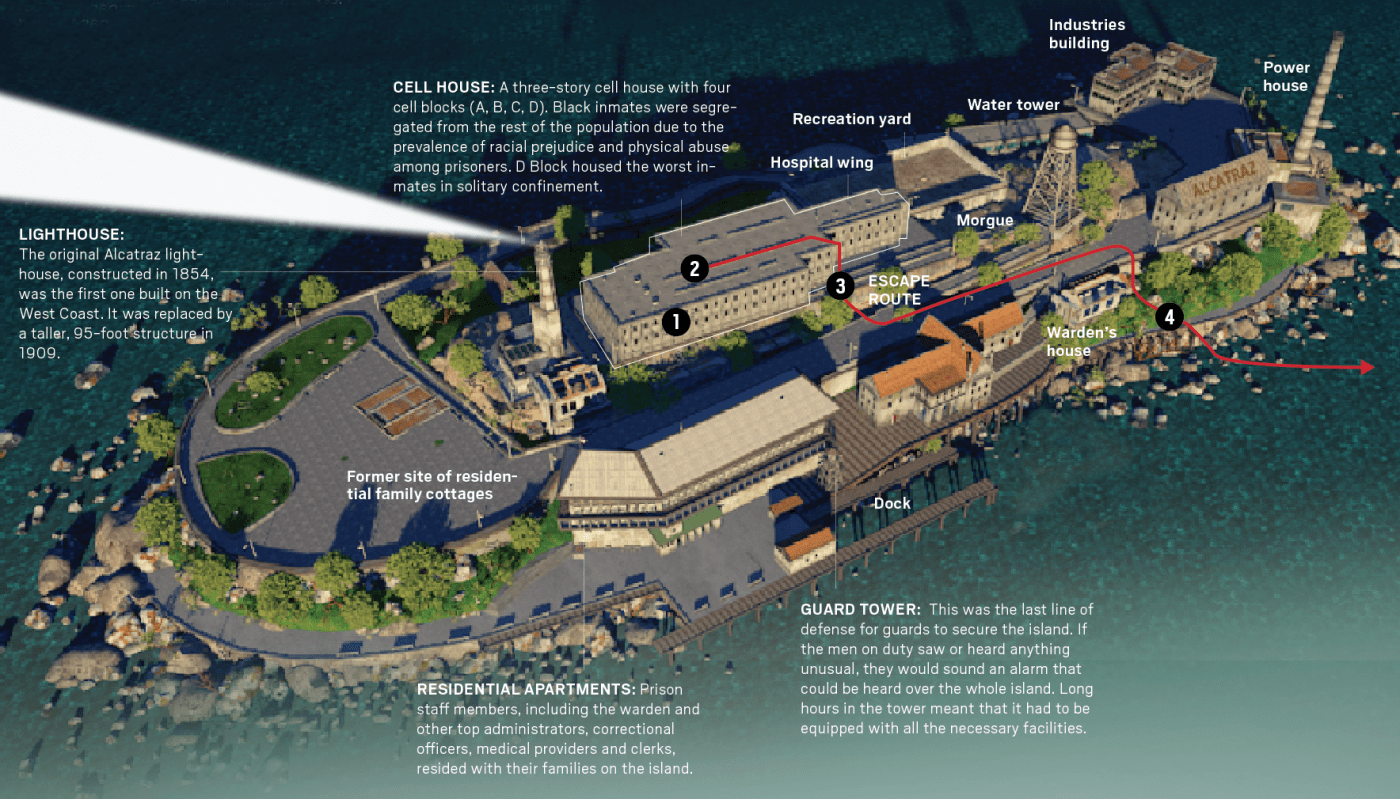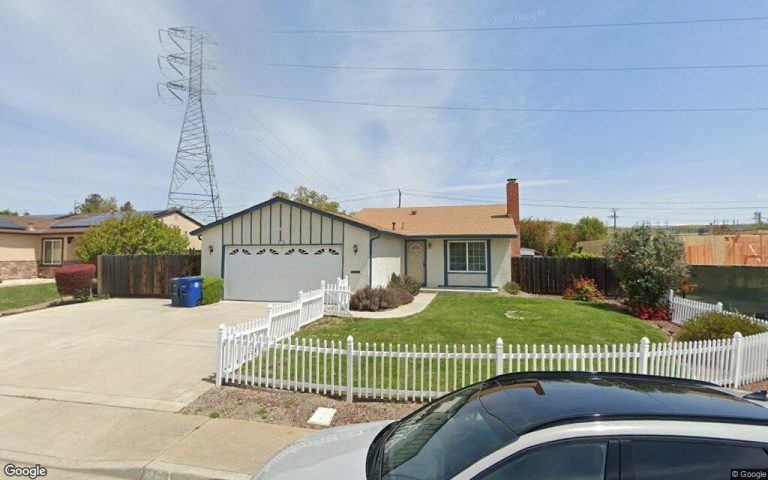On August 11, 1934 (90 years ago), a barge transporting 32 of America’s most dangerous criminals docked at the Alcatraz Federal Penitentiary. They were its first prisoners. Nicknamed “The Rock,” the prison was built on a 22-acre outcrop 1.5 miles offshore in San Francisco Bay’s cold, turbulent, shark-infested waters. It was deemed unescapable. By the time Alcatraz closed in 1963, there had been 14 escape attempts involving 36 inmates. One group of three succeeded but were never found. Here’s a look at the world’s most famous prison.
ON THE ISLAND
Alcatraz held roughly 1,576 prisoners from 1934 to 1963, with an average population of 260 to 270. Its maximum capacity of 336 was never reached. Many of the prison staff lived on the island with their families.
THE GREAT ESCAPE
In 1962, three inmates managed to break out of Alcatraz. However, no evidence of their survival was ever confirmed. Here’s how they did it:
The three men carved an opening in the wall of their cell with metal spoons. On the night of their escape, masks made of papier-mache and human hair were placed on their pillows to make it look like they were asleep in bed.
The three crawled through the opening and made their way along a corridor behind the walls and climbed out a ventilator on the roof.
They slid down the bakery smokestack at the rear of the cell house.
They climbed over a fence and dashed to the northeastern shore of the island, where they launched a raft made of 50 stolen raincoats
RELATED: Is the infamous 1962 Alcatraz escape story all wrong? New book suggests ‘yes’
INSIDE THE PRISON
The prison building was built between 1910 and 1912, when Alcatraz was a military facility. When the disciplinary barracks were transferred from military control to the Bureau of Prisons in 1933, the building was renovated at a cost of $260,000 into a cell house with four cell blocks and reinforced cell bars to prevent escapes. There were 336 cells in B and C blocks.
THE CELL
Cells had a small sink with cold running water, a small sleeping cot and a toilet. Most men could extend their arms and touch each wall within their cell.
ALCALTRAZ’S MOST NOTORIOUS PRISONERS
LIFE IN THE PRISON
Prisoners arrived on Alcatraz in handcuffs and ankle shackles. Daily life was harsh, and prisoners were given only four rights: medical attention, shelter, food and clothing. Recreational activities and family visits had to be earned through hard work.
6:30 a.m.: Morning whistle. Prisoners rise, dress and organize their cells.
6:45: Guards take position at mess hall and supervise prisoners.
6:50: Second morning whistle. Prisoners stand by doors. Guards take count and unlock cell doors.
6:55: Whistle signal is given and prisoners step out of their cells.
7: Third whistle signal. Prisoners proceed to mess hall and have 20 minutes to eat.
7:20: Prisoners proceed to recreation yard, inside detail or their work cells.
7:25: Guards count prisoners.
7:30: Shop foreman counts his detail, signs count slip and reports it to lieutenant.
9:30: Rest period.
9:38: Whistle signal is given and prisoners assemble for count. Count is reported and men return to work.
11:30: Prisoners assemble and count is taken, registered and reported to lieutenant.
11:35: Prisoners assemble in line and proceed to mess hall.
11:40: Dinner Noon: Lockup and cell count.
12:20 p.m.: Unlock; prisoners report to yard or shop for work.
12:30: Prisoners are counted.
2:30: Rest period.
4:15: Work ends and count is taken.
4:25: Prisoners report to mess hall.
4:45: Prisoners return to cells.
4:50: Final lockup.
5, 8, 9:30 (lights out),
12:01 a.m., 3, 5: Prisoners are counted.
Related Articles
Today in History: August 12, Charlottesville car attack
History Happy Hour in downtown Campbell looks at Joaquín Murrieta
San Jose neighborhood celebrates centennial Aug. 24
Bell ringing honors those lost In WWII bombing of Cupertino’s sister city
Today in History: August 11, first prisoners reach Alcatraz
Sources: National Park Service, Federal Bureau of Prisons, History.com













+ There are no comments
Add yours